The Shocking Truth About Hair Plugs Cost: 7 Factors That Determine the Price
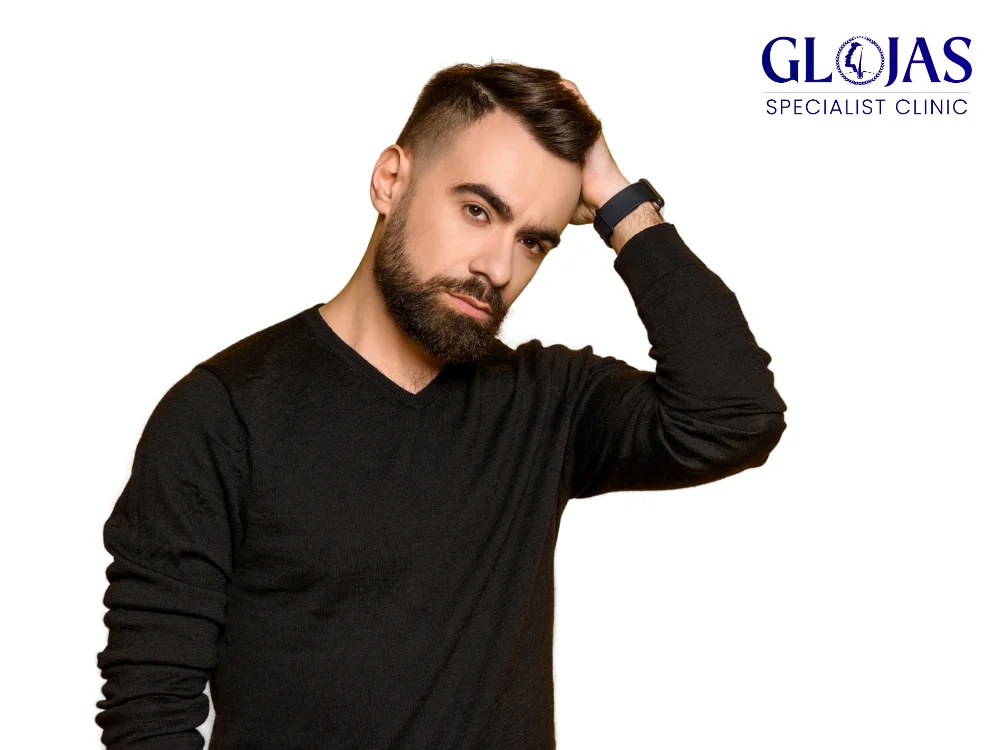
Hair loss is a common concern for millions of people around the world, and one of the most sought-after solutions is hair restoration procedures, such as hair plugs. However, when considering hair restoration, one of the first questions that come to mind is, “How much do hair plugs cost?” The price of hair plugs can vary significantly based on several factors, including the type of procedure, the clinic’s location, and the number of grafts needed. In this article, we’ll break down the costs associated with hair plugs, explain what influences the price, and help you understand what to expect when planning for a hair restoration procedure. What Are Hair Plugs? Before diving into the costs, it’s essential to understand what hair plugs are. Hair plugs refer to an older hair transplant method where clusters of hair follicles were taken from the donor area (usually the back of the head) and transplanted into bald or thinning areas of the scalp. Although this method was common in the past, modern techniques like Follicular Unit Transplantation (FUT) and Follicular Unit Extraction (FUE) have largely replaced traditional hair plugs due to their more natural-looking results. Even though the term “hair plugs” is often used to describe hair restoration in general, today’s advanced procedures offer better outcomes and involve more sophisticated processes. So, when discussing the cost of hair plugs, it usually refers to modern hair transplant methods. Factors That Influence Hair Plugs Cost The cost of hair plugs can vary greatly depending on a variety of factors. Here are the seven key elements that determine the price of a hair restoration procedure: 1. Type of Procedure (FUT vs. FUE) The two most common hair transplant methods—Follicular Unit Transplantation (FUT) and Follicular Unit Extraction (FUE)—come with different price points. FUT: This method involves removing a strip of scalp from the donor area and dividing it into smaller units for transplanting. FUT is generally less expensive than FUE but can leave a linear scar. FUE: This technique involves individually extracting hair follicles from the donor area and transplanting them. FUE is more labor-intensive and time-consuming, leading to a higher cost. However, it results in minimal scarring and quicker recovery times. 2. Number of Grafts Needed The cost of hair plugs is largely determined by how many grafts (hair follicles) are required to cover the thinning or balding areas. Each graft typically contains 1-4 hairs, and the price per graft can range from $3 to $10. On average, patients need between 1,000 to 3,000 grafts, depending on the extent of hair loss. Mild Hair Loss: If you’re only experiencing minor thinning, you may need around 1,000 grafts, which could cost between $3,000 and $10,000. Moderate Hair Loss: Moderate balding may require 2,000 to 2,500 grafts, bringing the cost to $6,000 to $25,000. Severe Hair Loss: For significant hair loss, up to 3,000 or more grafts may be needed, which can push the price to $9,000 to $30,000 or more. 3. Geographical Location of the Clinic Where you choose to get your hair plugs done plays a major role in the overall cost. Clinics in major cities or affluent areas tend to charge more due to higher operational costs. For example, getting a hair transplant in New York City or Los Angeles will typically be more expensive than in smaller cities or towns. Similarly, medical tourism has become popular, with people traveling to countries like Malaysia, India, or Mexico to take advantage of lower hair transplant costs without compromising on quality. 4. Surgeon’s Expertise and Reputation The surgeon’s experience and reputation also affect the cost of hair plugs. A highly skilled, board-certified surgeon with years of experience will likely charge more than a less-experienced professional. While it might be tempting to go for the cheaper option, remember that hair restoration is a long-term investment, and opting for an experienced surgeon can make a huge difference in the quality of the results. 5. Clinic Amenities and Post-Operative Care The level of service and care provided by the clinic also influences the cost of hair plugs. Some clinics offer luxury amenities, personalized care, and follow-up visits, which can add to the overall price. Comprehensive post-operative care can ensure better healing and results, so it’s important to consider what’s included in the price when comparing clinics. 6. Extent of Hair Loss Your specific pattern and degree of hair loss will impact how many grafts you need, which in turn affects the overall cost. Men with advanced male pattern baldness, for example, may require multiple sessions to achieve full coverage, increasing the cost substantially. 7. Anesthesia and Additional Costs Hair transplant procedures often require local anesthesia to numb the scalp during surgery. Some clinics include the cost of anesthesia in the overall price, while others charge extra. Additionally, there may be costs associated with medications, post-surgery treatments, and follow-up appointments. Typical Price Ranges for Hair Plugs To provide a clearer picture of hair plugs cost, here’s a rough breakdown based on the factors mentioned: Low-End Costs: $3,000 – $5,000 for small procedures or clinics in less expensive regions. Mid-Range Costs: $6,000 – $12,000 for average procedures with 1,500 – 2,500 grafts in moderate-cost regions. High-End Costs: $15,000 – $30,000+ for extensive procedures or treatments in high-cost cities or by highly reputable surgeons. These costs typically cover the entire procedure, including the surgeon’s fee, clinic charges, and some post-operative care. However, make sure to confirm all potential fees during your consultation to avoid unexpected expenses. Are Hair Plugs Worth the Investment? While hair plugs (or modern hair transplant methods) can be a significant financial investment, many people find that the long-term benefits outweigh the costs. Hair restoration can significantly boost self-esteem and confidence, helping individuals feel more comfortable in their appearance. Plus, the results of hair transplants are permanent, meaning you can enjoy your restored hair for many years without the need for ongoing treatments or medications. It’s essential to thoroughly research both the procedure and the surgeon before making a decision.
Liposculpting: Discover the 7 Astonishing Benefits
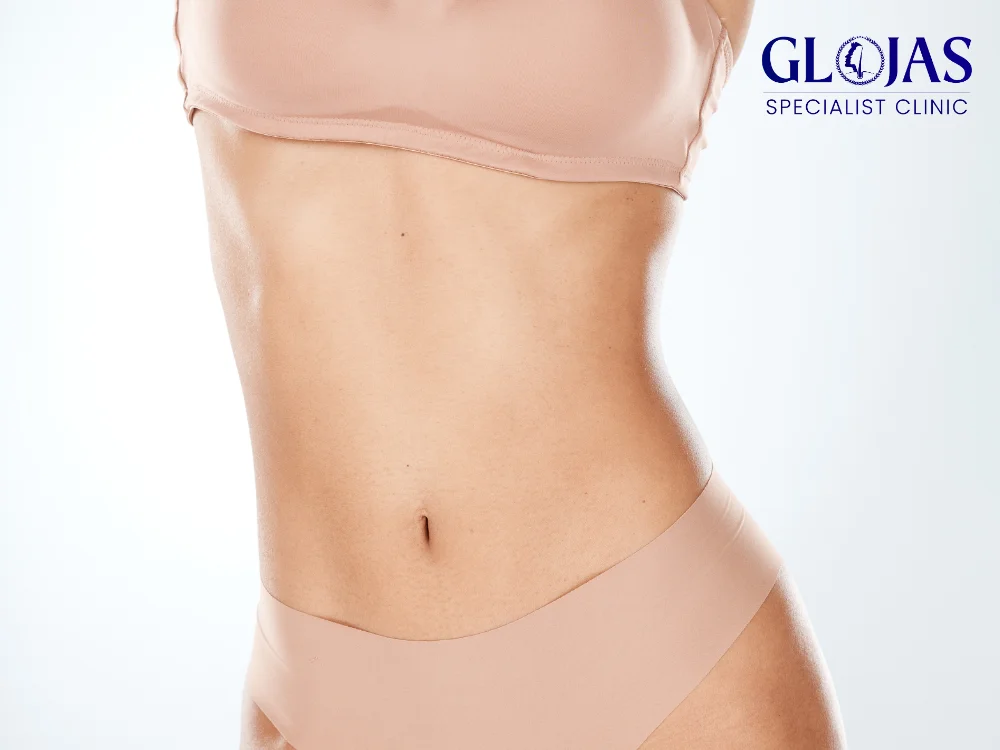
Liposculpting is rapidly becoming one of the most popular cosmetic procedures for individuals seeking a more defined and contoured body. Unlike traditional liposuction, which only removes fat, liposculpting takes a more refined approach by shaping and sculpting the body to create a toned and athletic appearance. In this article, we’ll dive deep into the world of liposculpting, exploring its benefits, process, and why it’s such a game-changer for body contouring. What is Liposculpting? Liposculpting is a body contouring procedure that removes unwanted fat while strategically leaving some fat behind to enhance the body’s natural contours. The goal is to create a more toned and aesthetically pleasing figure by enhancing the definition of muscles and body lines. While liposuction simply removes excess fat, liposculpting goes a step further by focusing on reshaping areas such as the abdomen, arms, thighs, and back. How is Liposculpting Different from Liposuction? The main difference between liposculpting and liposuction lies in their objectives. Liposuction is aimed at fat reduction, which can result in a slimmer appearance, but it doesn’t necessarily define or shape the body. Liposculpting, on the other hand, is more about precision. It targets fat removal in specific areas to enhance muscle definition and create natural contours. This subtle sculpting offers a more athletic look compared to the generalized slimming of traditional liposuction. Who is a Good Candidate for Liposculpting? Liposculpting is not a weight-loss solution. Ideal candidates are individuals who are already near their target weight but have stubborn fat deposits that don’t respond to diet and exercise. Candidates should have good skin elasticity, as this is important for achieving smooth results post-surgery. People looking to highlight areas such as their abs, waist, back, or arms, are often the best candidates for liposculpting. Key Factors to Consider Before Getting Liposculpting Stable Weight: Candidates should have a stable weight for at least six months. Healthy Lifestyle: Liposculpting works best in conjunction with a healthy diet and regular exercise. Realistic Expectations: It’s important to have realistic expectations about what liposculpting can achieve. The procedure can enhance your body’s natural contours but cannot replace the benefits of maintaining overall health and fitness. The Liposculpting Procedure: What to Expect Liposculpting is typically performed under local anesthesia with mild sedation. The surgeon makes small incisions near the target areas and inserts a thin tube called a cannula. This cannula removes fat through gentle suction while leaving behind a layer of fat to sculpt the desired contours. Step-by-Step Breakdown of the Liposculpting Process Consultation and Planning: The surgeon will assess the areas where fat needs to be removed and where contouring should be done. This step is crucial for achieving personalized results. Anesthesia: Local anesthesia is administered to numb the area, ensuring the patient remains comfortable during the procedure. Fat Removal: The cannula is used to remove unwanted fat in a controlled manner. Shaping and Contouring: The surgeon then sculpts the remaining fat, ensuring the muscles and natural body lines are enhanced. Recovery: After the procedure, patients typically experience mild swelling and bruising, which subsides in a few days. Most patients can return to light activities within a week. What Areas Can Be Treated with Liposculpting? Liposculpting is versatile and can be used to enhance multiple areas of the body, including: Abdomen: To define the abs and waist. Back: For a sculpted, athletic back. Arms: To achieve a more toned look, especially for the biceps and triceps. Thighs: To reduce inner thigh fat and create smoother contours. Chin and Neck: For a more defined jawline and neck silhouette. Each of these areas can benefit from liposculpting, providing a more toned and attractive appearance. Recovery After Liposculpting: What to Expect After the procedure, patients can expect mild discomfort, swelling, and bruising, which are normal side effects. However, the recovery time for liposculpting is generally shorter than traditional liposuction. Here’s what you can expect during the recovery phase: Recovery Timeline First Week: Swelling and bruising are most noticeable. Compression garments may be recommended to minimize swelling and promote healing. Second Week: Swelling decreases, and most patients can return to light activities. One Month: Patients start to see more defined results as swelling continues to subside. Three to Six Months: Final results become fully visible. The sculpted areas will look more toned and defined as the body adjusts. Benefits of Liposculpting The benefits of liposculpting extend far beyond just removing fat. Here are some of the most notable advantages: Improved Muscle Definition: Liposculpting highlights the body’s natural muscles, making them more prominent. Precision Body Contouring: The procedure allows for targeted fat removal and shaping, offering more precision than traditional fat-reduction methods. Natural Results: Unlike other cosmetic procedures, liposculpting enhances your natural contours, offering subtle, yet significant improvements. Faster Recovery: Since it’s less invasive than traditional liposuction, the recovery time is shorter, allowing patients to resume daily activities more quickly. Permanent Results: Once fat cells are removed, they don’t return, offering long-lasting results, provided the patient maintains a stable weight. Boost in Confidence: With a more sculpted, defined body, many patients experience an increase in self-confidence and body image satisfaction. Risks and Side Effects of Liposculpting Like any surgical procedure, liposculpting carries some risks. The most common risks include infection, swelling, bruising, and temporary numbness in the treated areas. It’s essential to choose a skilled and certified surgeon to minimize these risks and ensure the best possible results. How to Minimize Risks Follow Post-Op Instructions: Adhering to the surgeon’s recovery instructions is crucial for minimizing complications. Stay Hydrated: Drinking plenty of water aids in the healing process. Maintain a Healthy Diet: Proper nutrition is essential for fast recovery and sustaining long-term results. FAQs About Liposculpting Is liposculpting permanent? Yes, the results of liposculpting are permanent, as the removed fat cells do not regenerate. However, maintaining a stable weight is crucial for preserving the results. How long does the liposculpting procedure take? The procedure typically takes 2 to 4 hours, depending on the number of areas being
Ultimate Guide to Fillers: 7 Amazing Benefits for a Youthful Appearance
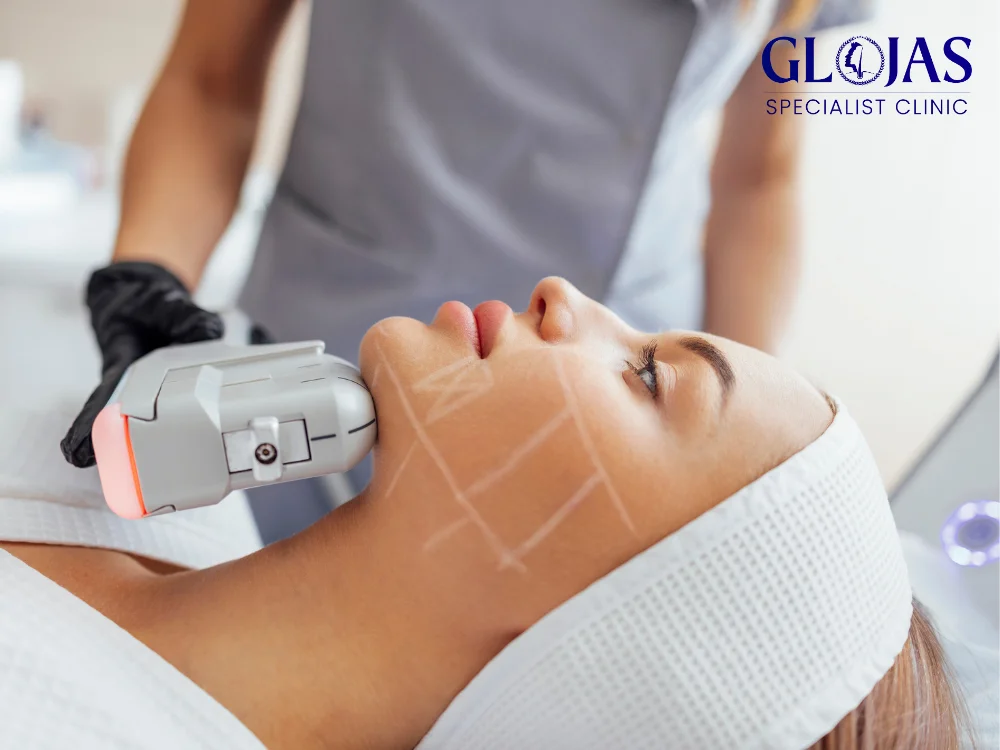
Fillers have revolutionized the beauty industry, offering a non-surgical way to restore youthfulness and enhance facial features. They have become increasingly popular among individuals seeking to combat signs of aging without undergoing invasive procedures. In this comprehensive guide, we’ll explore everything you need to know about fillers, including how they work, their benefits, and the latest trends like HIFU treatment, which can complement filler use. What Are Fillers? Fillers, also known as dermal fillers, are gel-like substances injected beneath the skin to restore lost volume, smooth wrinkles, and enhance facial contours. As we age, our skin loses collagen and elasticity, leading to sagging, fine lines, and volume loss. Fillers can address these concerns by plumping up the skin and making it look fuller and more youthful. Commonly used fillers include: Hyaluronic acid (HA) fillers: Known for their hydrating properties, these are the most popular type and are naturally found in the skin. Calcium hydroxylapatite (CaHA) fillers: Thicker and longer-lasting, ideal for deeper wrinkles. Poly-L-lactic acid fillers: Stimulate collagen production over time for gradual results. How Do Fillers Work? Fillers work by adding volume to areas where the skin has thinned due to aging or other factors. When injected into targeted areas, the gel-like substance binds with water molecules, plumping the skin and creating a smoother appearance. The results are immediate in most cases, though some types of fillers take time to stimulate collagen production, providing longer-lasting effects. Areas Commonly Treated with Fillers Fillers are versatile and can be used in various areas of the face, such as: Lips: Enhance volume and shape. Cheeks: Restore volume for a youthful contour. Nasolabial folds: Smooth deep lines running from the nose to the mouth. Under-eye hollows: Address dark circles and volume loss. 7 Benefits of Fillers for a Youthful Appearance If you’re looking for a quick, non-invasive way to rejuvenate your face, fillers offer numerous benefits. Here are seven reasons why fillers are an excellent choice for anyone seeking youthful skin: 1. Instant Results One of the biggest advantages of fillers is that they provide immediate results. After just one session, you’ll notice smoother skin, plumper features, and fewer wrinkles. 2. Minimally Invasive Unlike surgical procedures, fillers require no incisions or general anesthesia. The injections are done with fine needles, and the recovery time is minimal, often allowing patients to resume daily activities immediately. 3. Natural-Looking Enhancements Modern fillers are designed to work with the body’s natural processes, meaning the results look subtle and natural. Whether you’re enhancing your lips or smoothing out wrinkles, fillers can give you a refreshed appearance without looking “overdone.” 4. Long-Lasting Effects Depending on the type of filler used, the results can last anywhere from six months to two years. While they aren’t permanent, fillers offer long-lasting results that can be easily maintained with follow-up treatments. 5. Collagen Stimulation Some fillers, like Poly-L-lactic acid, don’t just fill in wrinkles—they stimulate collagen production over time. This helps the skin improve naturally and leads to more sustainable results. 6. Customizable Treatments Fillers offer versatility, allowing them to be customized to the specific needs of each individual. Whether you want subtle lip enhancement or need to fill deep wrinkles, a skilled injector can tailor the treatment to your desired outcome. 7. Complementary to Other Treatments Fillers work well in combination with other non-surgical procedures like HIFU (High-Intensity Focused Ultrasound), which targets deeper layers of the skin to lift and tighten. The combination of fillers for volume and HIFU for tightening can provide a comprehensive facial rejuvenation without the need for surgery. What Is HIFU and How Does It Complement Fillers? HIFU (High-Intensity Focused Ultrasound) is a non-invasive treatment that uses ultrasound energy to stimulate the deeper layers of the skin, promoting collagen production and providing a lifting effect. Unlike fillers, which target surface-level concerns like wrinkles and volume loss, HIFU reaches the foundational layers of the skin to tighten and lift sagging areas. How HIFU Works HIFU delivers ultrasound energy deep into the skin without damaging the surface, targeting the SMAS (Superficial Musculoaponeurotic System) layer—the same area addressed during a surgical facelift. The energy triggers a healing response, causing the skin to tighten and lift over time. Combining Fillers and HIFU for Maximum Results While fillers focus on enhancing volume and filling in wrinkles, HIFU works beneath the surface to provide structural support. By combining the two treatments, you can address both surface-level signs of aging and deeper skin laxity for a more complete rejuvenation. This combination is often referred to as a “non-surgical facelift.” How to Prepare for Filler Treatments Preparing for a filler treatment is simple, but there are a few steps to ensure the best results: Consult with a certified professional: Make sure the practitioner is experienced and certified to administer fillers. Avoid blood-thinning medications: This includes aspirin and other anti-inflammatory drugs, which can increase the risk of bruising. Hydrate and moisturize: Keep your skin well-hydrated before the treatment to promote optimal filler integration. Possible Side Effects of Fillers While fillers are generally safe, there are some potential side effects to be aware of: Bruising and swelling: Common around the injection site but typically subsides within a few days. Lumps or unevenness: This can occur if the filler isn’t distributed evenly but can usually be corrected by the practitioner. Allergic reactions: Rare but possible, especially with synthetic fillers. FAQs About Fillers 1. How long do fillers last? The longevity of fillers depends on the type used and the area treated. Most fillers last between six months and two years. 2. Are fillers painful? Most fillers contain lidocaine, a numbing agent, to reduce discomfort during the procedure. However, some patients may experience mild discomfort during the injection. 3. Can I combine fillers with other treatments? Yes, fillers can be combined with other non-surgical treatments like HIFU or Botox for enhanced results. 4. How much do fillers cost? The cost of fillers varies depending on the type of filler, the number of syringes
Hair Loss Treatment : Causes, Medication, Prevention (2025)
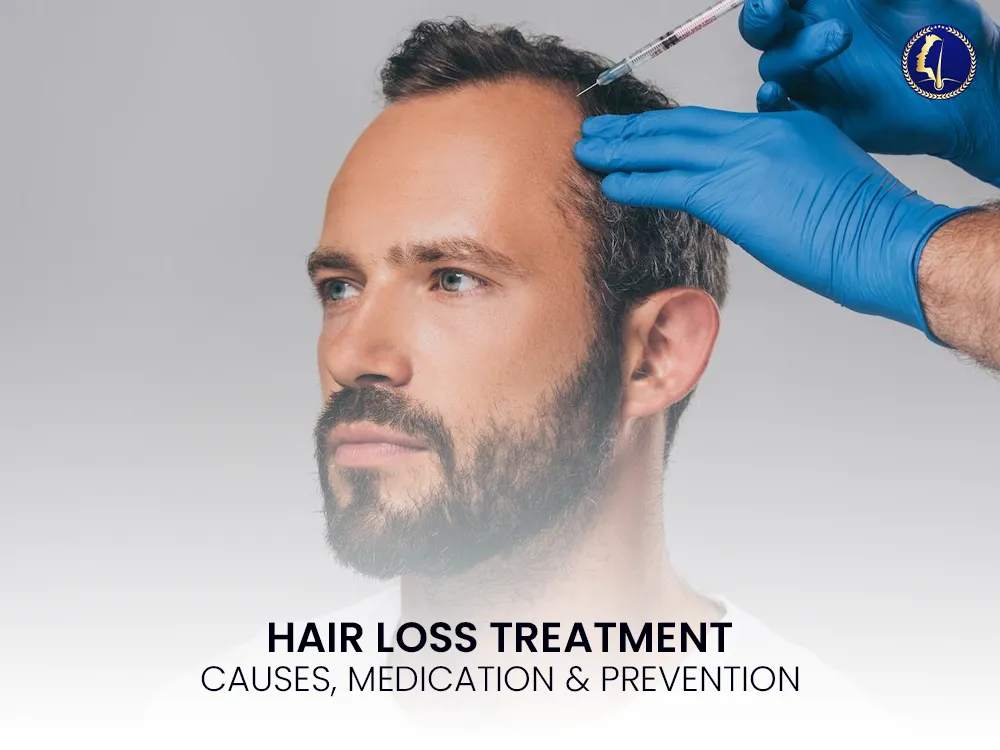
Hair loss treatment is a common condition that affects people of all ages and genders. While some hair loss is normal as part of the hair growth cycle, excessive shedding or thinning can indicate an underlying issue. Understanding Hair Loss Hair loss, medically termed alopecia, can occur in different patterns and intensities. It is essential to identify the type of hair loss to determine the appropriate treatment. Common Types of Hair Loss: Androgenetic Alopecia: Also known as male or female pattern baldness, this is the most common form of hair loss caused by genetics and hormonal changes. Telogen Effluvium: Temporary hair shedding caused by stress, illness, or hormonal fluctuations. Alopecia Areata: An autoimmune condition where the immune system attacks hair follicles, leading to patchy hair loss. Traction Alopecia: Hair loss caused by excessive tension or pulling on the hair due to tight hairstyles. Scarring Alopecia: Permanent hair loss caused by inflammation or scarring of the scalp. Causes of Hair Loss 1. Genetic Factors Hereditary conditions like androgenetic alopecia are the leading causes of hair thinning and baldness. 2. Hormonal Changes Conditions such as pregnancy, menopause, or thyroid dysfunction can trigger hair loss. 3. Medical Conditions Diseases like lupus, diabetes, and scalp infections can lead to hair shedding. 4. Medications and Treatments Certain drugs, including chemotherapy, antidepressants, and blood thinners, may cause temporary hair loss. 5. Nutritional Deficiencies Lack of essential nutrients like iron, zinc, and biotin can weaken hair follicles and lead to hair thinning. 6. Stress and Lifestyle Factors Chronic stress, smoking, and poor hair care practices can exacerbate hair loss. Medications for Hair Loss Treatment Several FDA-approved medications and treatments can help manage or reverse hair loss, depending on the underlying cause. 1. Minoxidil (Rogaine) A topical solution or foam that promotes hair regrowth by stimulating blood flow to the scalp. Suitable for androgenetic alopecia and other types of hair loss. 2. Finasteride (Propecia) An oral medication that inhibits dihydrotestosterone (DHT), a hormone responsible for hair follicle shrinkage in androgenetic alopecia. 3. Spironolactone An oral medication used primarily in women to block androgens and reduce hair thinning caused by hormonal imbalances. 4. Corticosteroids Injected or topical steroids are effective in treating autoimmune-related hair loss, such as alopecia areata. 5. Platelet-Rich Plasma (PRP) Therapy PRP involves injecting concentrated platelets from the patient’s blood into the scalp to stimulate hair follicle growth. 6. Hair Growth Supplements Products containing biotin, zinc, iron, and other nutrients can support overall hair health and growth. Prevention Strategies While some causes of hair loss cannot be fully prevented, adopting healthy habits can minimize risks and maintain strong hair. 1. Maintain a Balanced Diet Include nutrient-rich foods such as leafy greens, eggs, nuts, and fish to support hair health. 2. Practice Gentle Hair Care Avoid excessive heat styling, chemical treatments, and tight hairstyles that can damage hair. 3. Manage Stress Engage in relaxation techniques like yoga, meditation, and regular exercise to reduce stress levels. 4. Protect Your Scalp Wear hats or scarves to shield your scalp from harmful UV rays and environmental damage. 5. Monitor Health Conditions Address underlying health issues like thyroid dysfunction or nutritional deficiencies to prevent associated hair loss. 5 Frequently Asked Questions (FAQs) 1. How Much Hair Loss is Normal? Losing 50 to 100 hairs per day is considered normal as part of the natural hair growth cycle. Excessive shedding may indicate an issue. 2. Can Hair Loss Be Reversed? Depending on the cause, hair loss can often be reversed or managed with medications, lifestyle changes, or surgical treatments like hair transplantation. 3. Is Hair Loss Hereditary? Yes, genetic predisposition plays a significant role in conditions like androgenetic alopecia, commonly known as pattern baldness. 4. When Should I See a Doctor? If you notice sudden or patchy hair loss, excessive shedding, or signs of scalp inflammation, consult a dermatologist promptly. 5. Are Natural Remedies Effective for Hair Loss? While remedies like aloe vera and essential oils may improve scalp health, they are not clinically proven to treat significant hair loss. Suggested Treatment Plan for Hair Loss Step 1: Identify the Cause Consult a dermatologist to diagnose the underlying cause of your hair loss. Step 2: Start Medications Based on the diagnosis, begin appropriate treatments such as Minoxidil, Finasteride, or corticosteroids. Step 3: Support Hair Health Adopt a balanced diet, take supplements if needed, and practice gentle hair care. Step 4: Consider Advanced Options Explore treatments like PRP therapy, laser therapy, or hair transplantation for more severe cases. Step 5: Monitor Progress Track your hair growth and adjust treatments as recommended by your healthcare provider. Final Thoughts Hair loss can be distressing, but understanding its causes and available treatments can empower you to take action. From medications like Minoxidil and Finasteride to preventive measures and lifestyle changes, numerous options can help you regain confidence and maintain healthy hair. If you’re experiencing significant hair loss, consult a specialist to explore tailored solutions for your needs.
Hair Growth Surgery: Best Hair Loss Treatment For Baldness? Really? (2025)
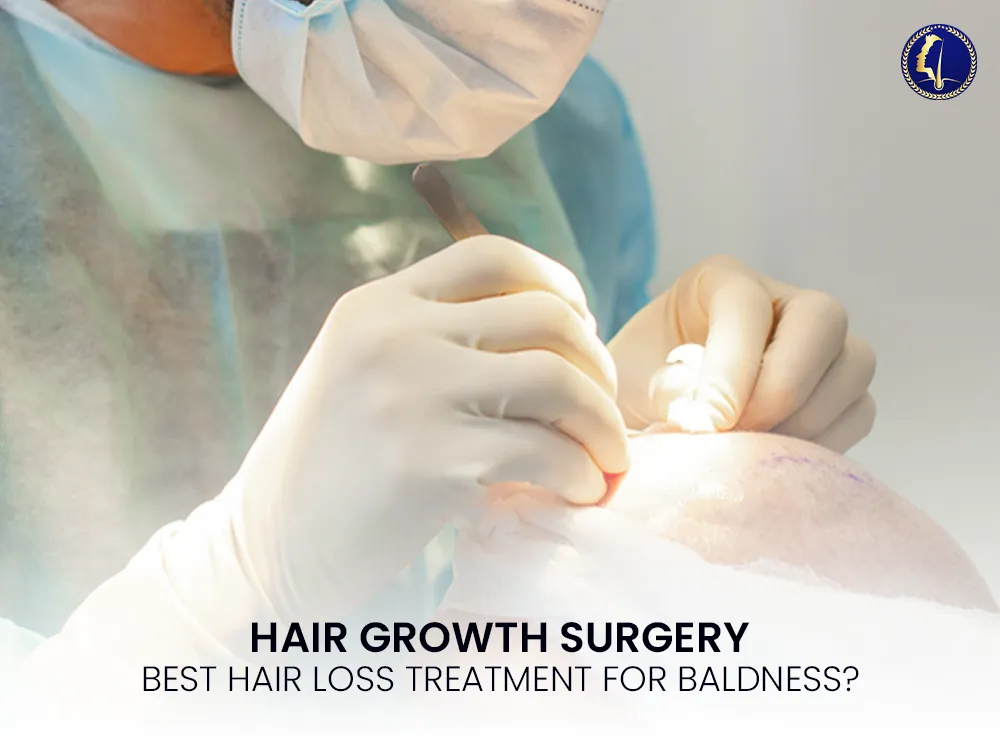
Hair Growth Surgery – Hair loss is a common concern affecting millions of people worldwide. It can significantly impact one’s self-esteem and quality of life. For those experiencing severe hair loss or baldness, hair growth surgery offers an effective and lasting solution. Understanding Hair Growth Surgery Hair growth surgery, commonly referred to as hair transplantation, involves transferring hair follicles from one area of the body (the donor site) to the bald or thinning area (the recipient site). It is a minimally invasive procedure aimed at restoring natural hair growth. Medical Terminology Explained: Follicular Unit Transplantation (FUT): A surgical method where a strip of scalp is removed to harvest hair follicles. Follicular Unit Extraction (FUE): A technique that involves extracting individual hair follicles directly from the donor area. Donor Site: The area on the scalp, usually the back or sides, where hair follicles are taken. Recipient Site: The bald or thinning area where the follicles are implanted. Androgenetic Alopecia: The medical term for hereditary hair loss, often referred to as male or female pattern baldness. What Causes Hair Loss? 1. Genetics Hereditary hair loss, or androgenetic alopecia, is the most common cause of baldness in both men and women. 2. Hormonal Imbalances Conditions like hypothyroidism or polycystic ovary syndrome (PCOS) can lead to hair thinning or shedding. 3. Medical Conditions Diseases such as alopecia areata, lupus, or scalp infections may trigger hair loss. 4. Lifestyle Factors Poor diet, excessive stress, and overuse of hairstyling products can exacerbate hair loss. 5. Aging Hair density naturally decreases with age, leading to visible thinning. Types of Hair Growth Surgery 1. Follicular Unit Transplantation (FUT) This traditional method involves removing a strip of scalp from the donor area to extract hair follicles. These follicles are then transplanted to the recipient site. Advantages: High graft yield. Suitable for advanced baldness. Disadvantages: Linear scar at the donor site. Longer recovery time. 2. Follicular Unit Extraction (FUE) In this modern technique, individual follicles are extracted using a micro-punch tool and transplanted to the recipient area. Advantages: No visible scarring. Faster recovery time. Disadvantages: Time-consuming. May require multiple sessions for extensive baldness. 3. Robotic Hair Transplantation Advanced robotic systems like ARTAS assist surgeons in precise follicle extraction and placement. Advantages: Increased accuracy. Minimal human error. Disadvantages: High cost. Limited availability. 4. Direct Hair Implantation (DHI) This advanced method uses a specialized implanter pen to place hair follicles directly into the scalp without prior incision. Advantages: Natural-looking results. Faster recovery. Disadvantages: Expensive. Benefits of Hair Growth Surgery Permanent Solution: Transplanted hair is resistant to hair loss and provides long-lasting results. Natural Appearance: Modern techniques ensure that transplanted hair blends seamlessly with existing hair. Minimally Invasive: Procedures like FUE and DHI have minimal downtime. Boosts Confidence: Restoring a full head of hair enhances self-esteem and social confidence. Post-Surgery Care Follow Medical Advice: Adhere to your surgeon’s instructions regarding wound care and medication. Avoid Strenuous Activities: Limit physical exertion for at least two weeks post-surgery. Use Gentle Hair Products: Avoid harsh shampoos and styling products during the recovery period. Be Patient: Hair growth typically starts 3-4 months post-surgery, with full results visible after 12 months. 5 Frequently Asked Questions (FAQs) 1. Who is a Good Candidate for Hair Growth Surgery? Individuals with stable hair loss, sufficient donor hair, and good overall health are ideal candidates. Consultation with a specialist is essential. 2. Is Hair Transplantation Painful? The procedure is performed under local anesthesia, making it virtually painless. Mild discomfort during recovery is manageable with prescribed medications. 3. How Long Does the Surgery Take? The duration depends on the method and extent of hair loss but generally ranges from 4 to 8 hours. 4. Are There Side Effects? Common side effects include temporary swelling, redness, and mild itching at the donor and recipient sites. Rarely, infections or scarring may occur. 5. How Much Does Hair Growth Surgery Cost? The cost varies based on the technique, number of grafts, and geographic location, ranging from $4,000 to $15,000 on average. Suggested Treatment Plan for Baldness Step 1: Consultation Schedule an appointment with a certified dermatologist or hair restoration surgeon to assess your hair loss and determine the best treatment option. Step 2: Choose the Right Procedure Based on your needs, decide between FUT, FUE, or advanced options like DHI or robotic transplantation. Step 3: Prepare for Surgery Follow pre-surgery instructions, including avoiding alcohol, smoking, and certain medications. Step 4: Post-Surgery Care Maintain scalp hygiene, avoid sun exposure, and attend follow-up appointments to monitor progress. Final Thoughts Hair growth surgery has revolutionized the way we treat baldness, offering a permanent and natural-looking solution. With advancements in techniques like FUE, DHI, and robotic transplantation, individuals can now regain their hair and confidence with minimal discomfort. If you’re considering hair restoration, consult a specialist to explore your options and embark on a journey toward a fuller head of hair.
What Is Alopecia Areata: Treat Hair Loss & What Caused It? (2025)
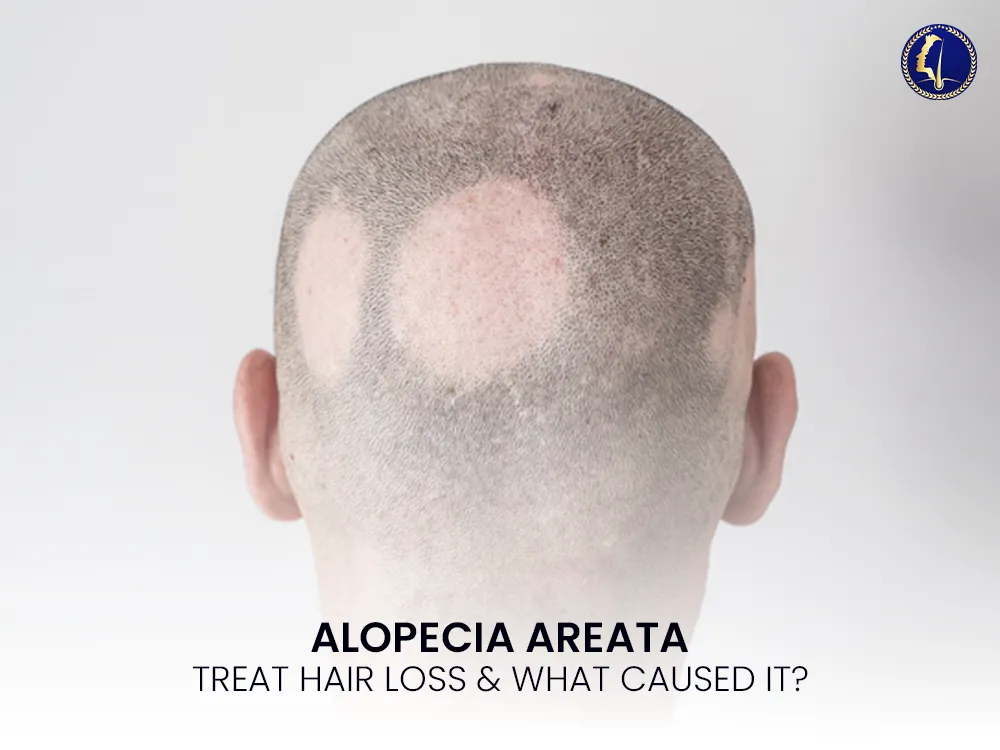
Alopecia areata is a chronic, non-scarring autoimmune disorder characterized by sudden, patchy hair loss. It occurs when the immune system mistakenly attacks hair follicles, leading to an interruption in hair growth. This condition can affect individuals of any age, gender, or ethnicity and often presents as smooth, round bald patches on the scalp or other parts of the body. Causes of Alopecia Areata The pathogenesis of alopecia areata involves an autoimmune response in which T lymphocytes target the hair follicle as a perceived threat. This immune activity disrupts the hair growth cycle, causing follicles to enter a resting phase prematurely and shed hair. Several factors are believed to contribute to its onset: Autoimmune dysfunction: Central to the condition, the immune system identifies hair follicle cells as foreign, triggering inflammation and hair loss. Genetic predisposition: Individuals with a family history of autoimmune disorders such as vitiligo, thyroid disease, or type 1 diabetes have an increased risk. Environmental triggers: Emotional stress, viral infections, or hormonal changes may precipitate or worsen the condition in predisposed individuals. Clinical Features and Diagnosis Alopecia areata typically presents as well-defined, circular areas of hair loss on the scalp. Other signs may include: Sudden hair shedding without associated pain or inflammation Loss of facial hair, eyebrows, or eyelashes in some cases Nail changes such as pitting, ridging, or brittleness Total hair loss (alopecia totalis) or complete body hair loss (alopecia universalis) in severe forms Diagnosis is usually clinical, based on history and physical examination. In uncertain cases, a scalp biopsy may be performed to confirm the autoimmune nature of follicular disruption. Medical Treatments for Alopecia Areata Treatment of alopecia areata depends on the extent of hair loss, duration, and patient preference. Although there is no definitive cure, many individuals experience regrowth with appropriate management. Treatment options include: Intralesional corticosteroids: Injected directly into affected areas to suppress local inflammation and stimulate follicular regrowth. Topical minoxidil (5%): Often used as adjunctive therapy to prolong the anagen phase and support regrowth. Topical or systemic corticosteroids: Prescribed in more extensive or rapidly progressing cases. JAK inhibitors (e.g., tofacitinib, ruxolitinib): Target specific immune pathways involved in the disease. These are considered for patients with moderate to severe or recalcitrant alopecia. Platelet-rich plasma (PRP) therapy: Autologous treatment that introduces concentrated growth factors to enhance follicular recovery. Supportive and Adjunctive Care In addition to pharmacological interventions, lifestyle and supportive strategies may improve patient outcomes: Stress reduction techniques, including mindfulness, counseling, or behavioral therapy Nutritional optimization, focusing on biotin, zinc, iron, and vitamin D Scalp care using gentle, non-irritating products Use of cosmetic aids such as wigs or scalp micropigmentation for aesthetic restoration Prognosis and Recurrence The prognosis of alopecia areata is variable. In many patients, hair regrows spontaneously or with treatment. However, recurrence is common, and some may progress to more severe forms. Early intervention often improves the chances of regrowth. Frequently Asked Questions Is alopecia areata reversible?Yes, in many cases. Hair regrowth is possible with or without treatment, particularly in mild or early-stage cases. Can children be affected by alopecia areata?Yes. The condition can begin in childhood and may require long-term management. Is alopecia areata contagious?No. It is an autoimmune disorder and cannot be transmitted through physical contact. Is PRP effective for alopecia areata?PRP can be beneficial in certain cases, especially when used alongside conventional medical treatments. It is not a standalone cure but may enhance follicular function. Can lifestyle changes help?Lifestyle changes such as reducing stress, maintaining a healthy diet, and avoiding scalp trauma can support recovery, although they are not curative alone. Conclusion Alopecia areata is a complex but manageable condition. Advances in immunotherapy and regenerative medicine offer hope for more effective and lasting results. Patients experiencing unexplained hair loss should seek professional evaluation to determine the most suitable course of treatment. For patients seeking medical advice or intervention, Glojas Aesthetic Clinic in Kuala Lumpur provides evidence-based, personalized care for alopecia and other forms of hair loss through a medically supervised team of licensed professionals.
Hairline Transplant: The Best Option for Hair Restoration? (2025)
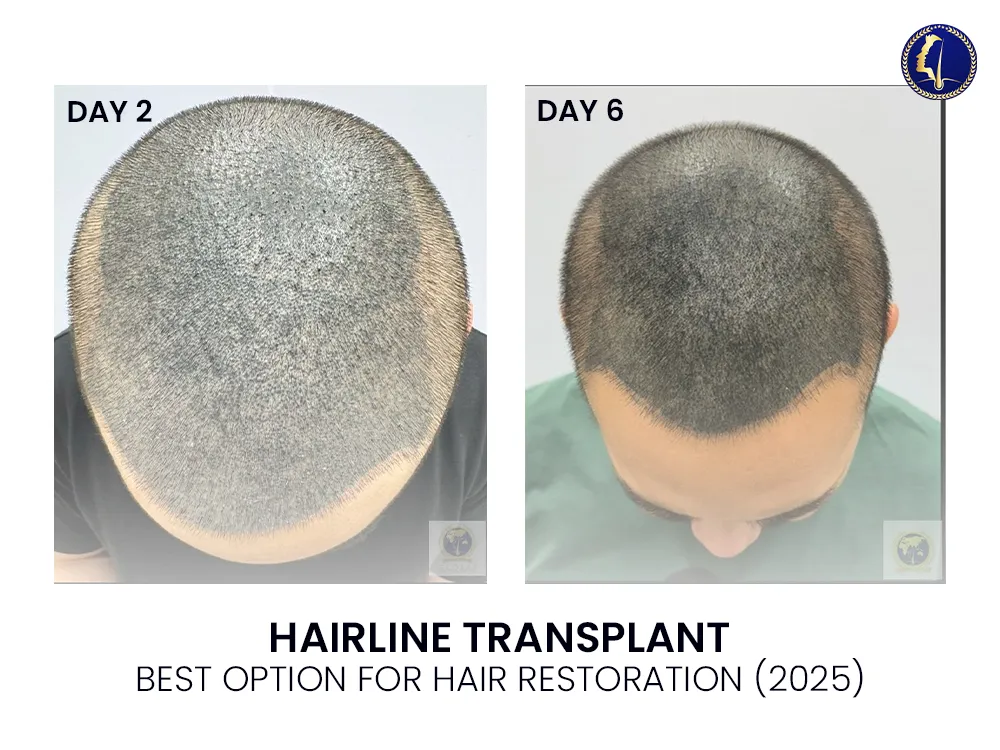
Hairline Transplant Hairline transplant is a type of hair restoration procedure that focuses on reshaping or restoring hair to the hairline, typically in cases where it has receded or thinned due to factors such as genetics, aging, or hair loss conditions like male or female pattern baldness. The procedure involves transplanting healthy hair follicles from the donor area (usually the back or sides of the scalp) to the thinning or receding areas along the hairline. Hairline Transplant Procedure The procedure involves several key steps: Consultation and Assessment: Before the transplant, the doctor will evaluate your hair loss, scalp condition, and overall health to determine whether you’re a good candidate for the procedure. This might include a physical exam and blood tests to assess any underlying medical conditions. Donor Hair Harvesting: There are two primary methods for harvesting hair follicles: Follicular Unit Transplantation (FUT): A strip of scalp is removed from the donor area, and individual hair follicles are then transplanted to the recipient area. Follicular Unit Extraction (FUE): Hair follicles are individually harvested from the donor area using a tiny punch tool, leaving minimal scarring. Implantation: After harvesting the follicles, they are carefully implanted into the thinning or balding areas. The surgeon creates small incisions and places each follicle to ensure a natural hairline. Post-Procedure Care: After the procedure, you may experience some swelling, redness, or discomfort, but these symptoms typically subside within a few days. The transplanted hair will shed within 2-3 weeks, but new hair growth should appear within 3-6 months. Results: The full results of a hairline transplant may take 12-18 months to fully manifest. However, the new hair should be thicker, healthier, and permanent. Types of Hair Transplant Surgeries Feature FUE (Follicular Unit Extraction) FUT (Follicular Unit Transplantation) Procedure Individual hair follicles are extracted and transplanted one by one. A strip of skin is removed from the donor area, then hair follicles are dissected and transplanted. Scarring Minimal scarring, typically tiny dot-like scars where follicles are extracted. Linear scar at the donor site where the strip of skin was removed. Recovery Time Faster recovery, typically 5-7 days for initial healing. Longer recovery time, around 10-14 days for initial healing. Hair Density Generally provides lower density in one session, multiple sessions may be needed for larger areas. Can transplant a larger number of follicles in one session, resulting in higher density. Pain Level Minimal discomfort, usually local anesthesia is used. Slightly more discomfort due to the strip removal, but still typically done with local anesthesia. Procedure Duration Longer procedure (6-8 hours) due to individual follicle extraction. Shorter procedure (4-6 hours) since it involves removing a strip. Ideal Candidates Best for those with small to moderate hair loss or those who want minimal scarring. Best for those with extensive hair loss and those willing to accept a linear scar. Results Natural-looking results with minimal visible scarring. Also provides natural-looking results, but with a visible scar at the donor site. Cost Generally more expensive due to the detailed, labor-intensive process. Typically less expensive compared to FUE, as fewer hours are needed for the procedure. Both techniques have their benefits, and the best choice depends on factors such as the degree of hair loss, budget, and personal preferences. Causes of Hair Loss Before diving into the benefits of hairline transplants, it’s essential to understand the underlying causes of hair loss. Several factors can contribute to hair thinning and baldness: Genetics (Androgenetic Alopecia): The most common cause of hair loss is heredity. Known as male-pattern or female-pattern baldness, this condition is linked to hormones and genetics, typically leading to gradual thinning of hair around the temples and crown. Hormonal Imbalances: Hormonal changes due to pregnancy, menopause, or thyroid disorders can lead to significant hair loss in women. Aging: As we age, hair growth naturally slows down, and hair follicles may become smaller, producing thinner hair or none at all. Stress: Severe physical or emotional stress can lead to a type of hair loss called telogen effluvium, where a large number of hair follicles enter the resting phase, leading to hair shedding. Nutritional Deficiencies: Poor diet or a lack of essential vitamins and minerals (like iron, biotin, and vitamin D) can weaken hair and lead to hair loss. Medical Conditions: Autoimmune diseases such as alopecia areata, fungal infections, or scalp conditions like dandruff can also contribute to hair thinning and loss. Male Hair Loss Pattern (Norwood Scale) Stage Description Hair Loss Pattern I Minimal or No Hair Loss Small, minimal recession at the temples or no noticeable hair loss. II Mild Hair Loss Receding hairline at the temples. III Moderate Hair Loss Noticeable recession at the temples, forming an “M” shape. IV Advanced Hair Loss Larger hair loss at the temples and crown, leaving a thin strip. V Severe Hair Loss Further thinning of the front and crown, forming a wider bald spot. VI Very Severe Hair Loss Significant hair loss at the front and crown, leaving a narrow strip of hair. VII Complete Hair Loss Almost total hair loss, with a small rim of hair around the sides and back. Hair Restoration Options Treatment Effectiveness Duration Cost Side Effects Hairline Transplant High effectiveness, long-lasting results Permanent (new hair grows after 6 months) RM 10,000 – RM 30,000 (depending on the clinic and country) Swelling, redness, infection risk Medications (Finasteride, Minoxidil) Moderate effectiveness, slow results Ongoing (requires long-term use) RM 200 – RM 300 monthly Possible sexual side effects (finasteride), scalp irritation (minoxidil) Platelet-Rich Plasma (PRP) Therapy Moderate to high effectiveness, boosts hair growth Temporary, requires follow-ups every few months RM 1,500 – RM 3,000 per session Mild discomfort, swelling Hair Wigs or Extensions Immediate but temporary solution Non-permanent RM 500 – RM 3,000 (depending on quality) Can be uncomfortable, may damage natural hair Hairline Transplant Cost In Malaysia Generally, the price of FUE Hair Transplants in Malaysia ranges from RM5,500 to RM15,000, with larger procedures costing more due to the increased time and precision required. Conclusion
10 Surprising Benefits of Visiting a Top Hair Clinic
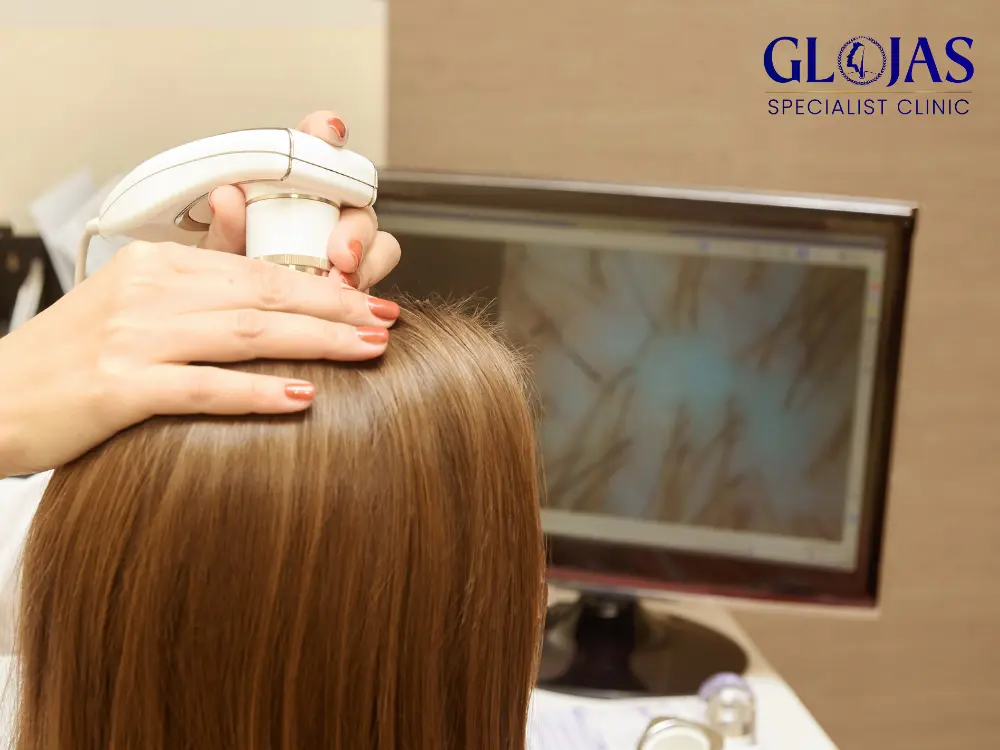
Hair loss is a sensitive issue that affects millions of people worldwide, impacting their self-esteem and overall quality of life. Finding the right solution can be overwhelming, but one of the most effective steps you can take is visiting a reputable hair clinic. These specialized centers offer a range of treatments that can help restore not just your hair but your confidence as well. In this article, we’ll explore the surprising benefits of visiting a top hair clinic and why it could be the best decision you make for your hair health. Understanding What a Hair Clinic Can Offer A hair clinic is a specialized medical center focused on diagnosing and treating hair and scalp issues. Whether you’re dealing with thinning hair, bald patches, or any other hair-related concerns, these clinics provide expert care tailored to your specific needs. The services offered at a hair clinic often range from hair transplants to non-surgical treatments, making them a one-stop solution for anyone struggling with hair loss. The Importance of Professional Diagnosis One of the most significant advantages of visiting a hair clinic is the access to professional diagnosis. Unlike over-the-counter products or home remedies, a hair clinic offers a thorough assessment of your scalp and hair condition. This diagnosis is crucial because it helps pinpoint the underlying causes of your hair loss, whether they’re genetic, hormonal, or due to lifestyle factors. With this information, a hair clinic can tailor a treatment plan that directly targets your specific issue. Top Treatments Available at Hair Clinics 1. Hair Transplant Surgery For those experiencing significant hair loss, hair transplant surgery is often the most effective solution. This procedure involves relocating hair follicles from one part of your body to the areas experiencing thinning or balding. The results are usually permanent, and when done by a skilled professional at a hair clinic, the outcome can look completely natural. 2. Platelet-Rich Plasma (PRP) Therapy PRP therapy is a cutting-edge treatment offered at many top hair clinics. This non-surgical procedure involves injecting platelet-rich plasma from your blood into your scalp. The growth factors in the plasma stimulate hair follicles, encouraging new hair growth. PRP therapy is particularly beneficial for those in the early stages of hair loss. 3. Laser Hair Therapy Laser hair therapy is a non-invasive treatment that uses low-level laser light to stimulate hair growth. It’s an excellent option for individuals who are not ready for surgery or want to complement other treatments. Many hair clinics offer this therapy as part of a comprehensive hair restoration program. 4. Scalp Micropigmentation (SMP) SMP is a non-surgical procedure where tiny dots of pigment are tattooed onto the scalp to mimic the appearance of hair follicles. This treatment is ideal for individuals who have shaved heads or want to create the illusion of thicker hair. It’s a popular service offered at many hair clinics due to its effectiveness and natural-looking results. 5. Custom Hair Care Products In addition to surgical and non-surgical treatments, hair clinics often provide custom hair care products. These products are formulated based on your specific hair and scalp condition, offering a personalized approach to hair care that you won’t find with over-the-counter alternatives. Why Choose a Hair Clinic Over DIY Solutions? Professional Expertise One of the main reasons to choose a hair clinic over DIY solutions is the expertise they offer. The specialists at hair clinics have extensive training and experience in treating hair loss. This professional expertise ensures that you receive the most effective treatment for your condition, minimizing the risk of further damage. Advanced Technology Hair clinics use the latest technology in hair restoration, providing treatments that are not available to the general public. These advanced technologies often yield better and faster results compared to traditional methods. Whether it’s state-of-the-art laser therapy or the latest in hair transplant techniques, a hair clinic is equipped to offer the best possible care. Comprehensive Care Hair loss can be complex, with multiple contributing factors. A hair clinic provides comprehensive care that addresses not just the symptoms but also the root causes of hair loss. This holistic approach ensures that your treatment plan is thorough and effective, offering long-term solutions rather than quick fixes. What to Expect During Your First Visit to a Hair Clinic Visiting a hair clinic for the first time can be a bit daunting, but understanding what to expect can ease your nerves. Your first visit typically starts with a consultation, where a specialist will discuss your hair concerns and medical history. This is followed by a scalp analysis, which helps in diagnosing the underlying issues. Based on this diagnosis, the specialist will recommend a treatment plan tailored to your needs. Most clinics will also provide you with information on the expected outcomes, costs, and any necessary follow-up treatments. Success Stories: Real-Life Transformations Many hair clinics showcase success stories of individuals who have undergone treatments with remarkable results. These transformations are not just about restoring hair but also about rebuilding confidence and improving overall well-being. Seeing these real-life examples can be incredibly motivating and reassuring for anyone considering treatment. FAQs About Hair Clinics What is the cost of a hair transplant at a hair clinic? The cost of a hair transplant varies depending on the clinic, the extent of the hair loss, and the specific procedure used. On average, you can expect to pay between $4,000 and $15,000. It’s important to consult with a hair clinic for an accurate estimate based on your needs. Are hair clinic treatments permanent? Some treatments, like hair transplants, offer permanent results, while others, like PRP therapy, may require ongoing sessions to maintain the effects. Your specialist will explain the expected duration of results during your consultation. How do I choose the right hair clinic? Choosing the right hair clinic involves researching the clinic’s reputation, the qualifications of its specialists, and the range of treatments offered. It’s also helpful to read reviews and testimonials from previous patients. Is it safe to undergo treatment
7 Effective Neck Fat Removal Techniques You Need to Know
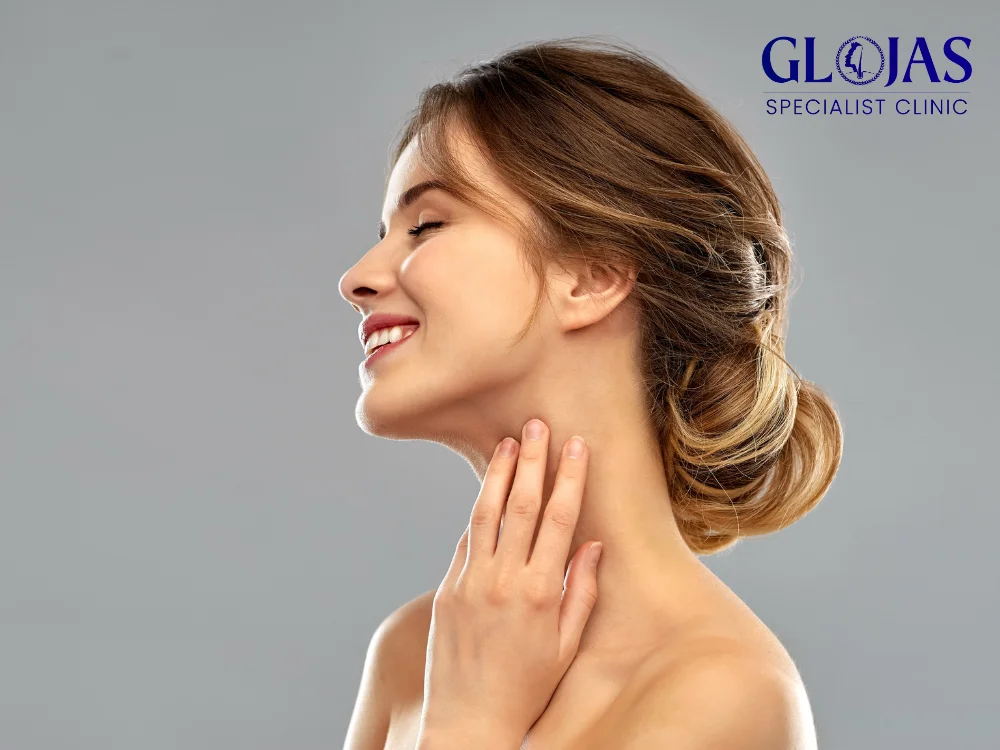
Excess fat in the neck area can be a source of frustration for many people, leading to what is commonly referred to as a “double chin.” Fortunately, there are several effective neck fat removal options available today that can help reshape and contour the neck, offering a slimmer and more youthful appearance. Whether you’re looking for non-surgical solutions or considering liposuction, this article will guide you through the best methods for neck fat removal. What Causes Neck Fat? Neck fat, or submental fat, can be caused by a variety of factors, including genetics, age, weight gain, and poor posture. Some people may develop a double chin even if they maintain a healthy weight due to their genetics. Aging also plays a significant role, as the skin loses elasticity and fat distribution changes, which can lead to a sagging neck or a thicker appearance in the neck area. Whatever the cause, neck fat removal is a popular cosmetic procedure that can help restore a more defined jawline and improve overall facial harmony. Liposuction for Neck Fat Removal Liposuction is one of the most effective and long-lasting procedures for neck fat removal. It is a surgical method that physically removes fat from the neck area, offering immediate and dramatic results. Here’s what you need to know about liposuction for neck fat: Procedure: During neck liposuction, a small incision is made in the chin or behind the ears. A thin tube called a cannula is inserted to suction out the excess fat. This reshapes the neck, defining the jawline and removing the appearance of a double chin. Recovery: Liposuction typically requires a short recovery period. Swelling and bruising may occur for a few days after the procedure, but most people can return to work and regular activities within a week. Results: One of the biggest advantages of liposuction for neck fat removal is that the results are permanent, provided you maintain a stable weight. Once the fat is removed, it does not come back. Who Is a Good Candidate?: Liposuction is ideal for people who have good skin elasticity and are looking to remove excess fat in the neck area. If you have sagging skin in addition to fat, you may need to consider a neck lift or combination procedures. Non-Surgical Neck Fat Removal Options While liposuction is highly effective, not everyone is ready to undergo surgery. Luckily, there are several non-surgical treatments for neck fat removal that offer good results with less downtime. 1. CoolSculpting (Cryolipolysis) CoolSculpting is a non-invasive procedure that uses controlled cooling to freeze and destroy fat cells in the neck. Over time, the body naturally eliminates the dead fat cells, resulting in a more sculpted appearance. Procedure: A CoolSculpting applicator is placed on the neck, and the fat cells are gradually frozen without harming the surrounding skin or tissue. Recovery: There is no downtime required with CoolSculpting. However, results take several weeks to become visible, as the body needs time to flush out the destroyed fat cells. Results: While not as immediate as liposuction, CoolSculpting offers noticeable results over time, and the fat loss is permanent as long as you maintain your weight. 2. Kybella Injections Kybella is an FDA-approved injectable treatment specifically designed for neck fat removal. It uses deoxycholic acid, a naturally occurring molecule that breaks down fat in the body. Procedure: Multiple small injections are administered under the chin to target fat cells. Kybella destroys the fat cells, and the body naturally eliminates them over time. Recovery: Mild swelling, bruising, and numbness are common side effects but typically resolve within a few days. Most patients can return to their regular activities after treatment. Results: It may take two to four treatments to achieve optimal results, with each session spaced about a month apart. Once the fat is removed, it does not come back. 3. Radiofrequency (RF) Treatments Radiofrequency treatments use energy to heat the fat cells beneath the skin, causing them to break down and tighten the skin. RF treatments are popular for both fat reduction and skin tightening, making them a good option for people with mild to moderate neck fat. Procedure: A specialized device is used to deliver controlled heat to the treatment area. The heat not only melts fat but also stimulates collagen production, which can help tighten the skin. Recovery: There is no downtime associated with RF treatments, but multiple sessions may be required for noticeable results. Results: Results develop gradually over the course of several months as the body naturally eliminates the fat cells and the skin tightens. 4. Ultrasound Cavitation Ultrasound cavitation is a non-invasive treatment that uses ultrasound waves to break down fat cells in the neck. These fat cells are then eliminated by the body’s lymphatic system. Procedure: A hand-held device is used to apply ultrasound energy to the neck area, which causes the fat cells to break apart without damaging the surrounding tissues. Recovery: There is no recovery time, but you may need several treatments to achieve your desired results. Results: Ultrasound cavitation offers gradual fat reduction, and results may vary depending on the number of sessions. 5. Laser Lipolysis (SculpSure) Laser lipolysis, commonly known by the brand name SculpSure, is a non-invasive procedure that uses laser energy to destroy fat cells in the neck. Procedure: The laser targets fat cells beneath the skin, heating them to the point where they are destroyed. Over time, the body naturally processes and removes these cells. Recovery: Laser lipolysis is a relatively quick procedure with no downtime, making it a great option for people with busy schedules. Results: Results from laser lipolysis are gradual and typically take a few weeks to a few months to fully develop. Is Neck Fat Removal Right for You? Whether you choose a surgical or non-surgical method for neck fat removal depends on several factors, including the amount of fat to be removed, your overall health, and your preferences regarding recovery time and treatment outcomes. It’s important to consult
5 Powerful Treatments to Reduce Wrinkles and Rejuvenate Your Skin
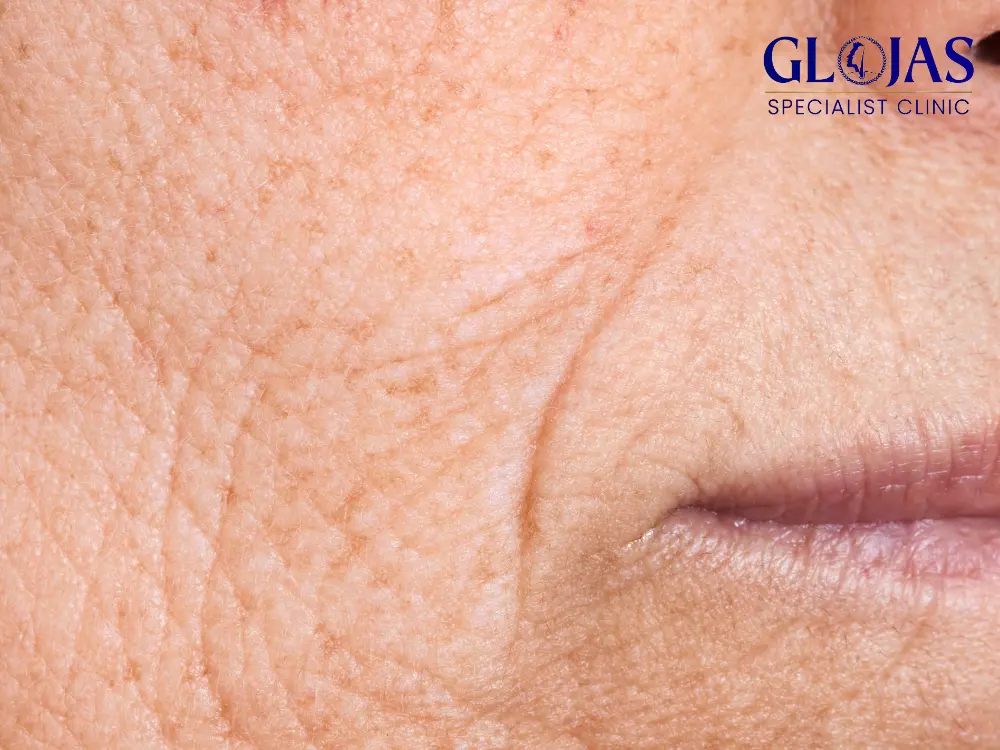
As we age, wrinkles are one of the most visible signs of aging that many individuals seek to reduce or prevent. Wrinkles can be caused by a combination of factors, including sun exposure, aging, facial expressions, and even environmental pollutants. Fortunately, modern skincare technology offers several effective treatments to diminish the appearance of wrinkles and restore youthful, radiant skin. One of the most effective options is the Fractional CO2 Laser, a cutting-edge treatment known for its ability to reverse the effects of aging on the skin. In this article, we’ll explore the causes of wrinkles, highlight different treatment options, and take a closer look at the Fractional CO2 Laser. What Causes Wrinkles? Before diving into treatments, it’s important to understand what causes wrinkles. Wrinkles form over time as the skin loses its elasticity and firmness. Several factors contribute to this process: 1. Aging Aging is the primary cause of wrinkles. As we grow older, the production of collagen and elastin in the skin decreases. Collagen provides structure and firmness, while elastin helps the skin stretch and return to its original shape. Without sufficient levels of these proteins, the skin begins to sag and crease, leading to the formation of fine lines and deep wrinkles. 2. Sun Exposure Excessive exposure to UV rays from the sun accelerates the breakdown of collagen and elastin. Over time, this leads to premature aging, commonly known as photoaging. UV radiation penetrates the skin and causes damage to its deeper layers, resulting in fine lines, wrinkles, and sunspots. 3. Repeated Facial Expressions Facial expressions like smiling, frowning, or squinting cause dynamic wrinkles. These lines are initially temporary but become more permanent over time as the skin loses its ability to bounce back. 4. Lifestyle Factors Smoking, poor diet, and lack of hydration can also accelerate the appearance of wrinkles. Smoking, in particular, restricts blood flow to the skin, depriving it of oxygen and essential nutrients, leading to premature aging. Top Treatments to Reduce Wrinkles There are various treatments available to reduce wrinkles, ranging from skincare products to advanced cosmetic procedures. Let’s explore some of the most effective options: 1. Topical Retinoids Retinoids, derived from vitamin A, are a popular and proven anti-aging ingredient. They work by increasing cell turnover and promoting collagen production, which helps to smooth out fine lines and wrinkles. Benefits of Retinoids: Boosts collagen production Increases skin cell turnover Improves skin texture and tone Retinoids are available in both over-the-counter (retinol) and prescription (tretinoin) forms. For deeper wrinkles, prescription-strength retinoids may be recommended. 2. Dermal Fillers Dermal fillers are a non-invasive cosmetic treatment that involves injecting substances like hyaluronic acid into the skin to fill in wrinkles and add volume. These fillers are effective in smoothing out fine lines, plumping the skin, and restoring lost facial volume. Benefits of Dermal Fillers: Immediate results Non-surgical and minimally invasive Long-lasting effects (6 months to 2 years) Dermal fillers are particularly effective for treating static wrinkles, such as smile lines, marionette lines, and wrinkles around the mouth. 3. Botox Botox is another popular treatment for dynamic wrinkles caused by repeated facial movements. Botox works by temporarily relaxing the muscles responsible for creating these wrinkles, resulting in smoother skin. Benefits of Botox: Quick and minimally invasive Effective for dynamic wrinkles (forehead lines, crow’s feet) Results last for 3 to 6 months While Botox is a powerful option for smoothing out dynamic wrinkles, it is not typically used for treating static wrinkles. 4. Chemical Peels Chemical peels involve applying a chemical solution to the skin to exfoliate its outer layer, encouraging new, healthier skin to regenerate. This treatment helps improve the texture of the skin and reduces the appearance of fine lines and wrinkles. Benefits of Chemical Peels: Smooths out fine lines Reduces age spots and pigmentation Enhances overall skin texture Chemical peels come in varying strengths, from superficial peels with minimal downtime to deeper peels that require a longer recovery period. 5. Fractional CO2 Laser: The Game-Changer in Wrinkle Treatment For individuals looking for a more advanced treatment to address moderate to severe wrinkles, the Fractional CO2 Laser is an excellent option. This laser treatment works by creating controlled microscopic injuries in the skin, which triggers the body’s natural healing process and stimulates collagen production. How Fractional CO2 Laser Works: The laser creates tiny perforations in the skin’s surface while leaving the surrounding tissue intact. As the skin heals, it becomes firmer and smoother, with a reduction in fine lines and wrinkles. The fractional nature of the treatment allows for faster healing compared to traditional laser resurfacing techniques. Benefits of Fractional CO2 Laser: Highly effective for deep wrinkles: It targets deeper layers of the skin, making it ideal for treating deep wrinkles and creases. Improves skin texture: Not only does it reduce wrinkles, but it also improves overall skin texture and tone by tightening the skin. Long-lasting results: The effects of the Fractional CO2 Laser can last for several years, making it a durable solution for aging skin. Recovery After Fractional CO2 Laser The recovery time after a Fractional CO2 Laser treatment depends on the intensity of the procedure. In general, patients can expect some redness, swelling, and peeling for a few days after the treatment. It’s essential to follow post-treatment care instructions, which typically include avoiding sun exposure, using gentle skincare products, and applying sunscreen regularly to protect the healing skin. Most patients see noticeable results within a few weeks, with full results visible after 2 to 3 months as collagen production continues to improve the skin. How to Prevent Wrinkles While it’s impossible to completely prevent wrinkles, there are several steps you can take to slow down the aging process and keep your skin looking youthful for as long as possible: Protect your skin from the sun: Wear a broad-spectrum sunscreen daily, even on cloudy days, to protect your skin from UV damage. Hydrate: Drink plenty of water and use a good moisturizer to keep your skin hydrated and plump.
